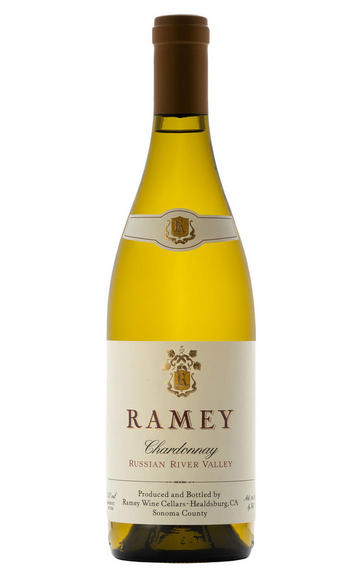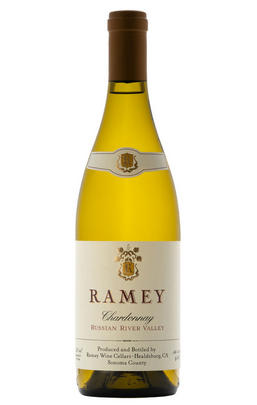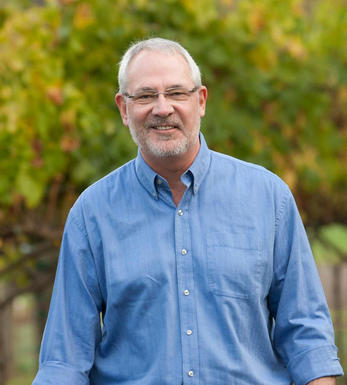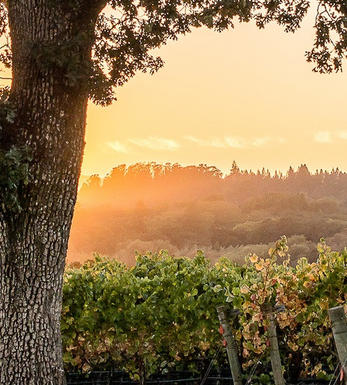
2017 Ramey, Westside Farms Vineyard Chardonnay, Russian River Valley, California, USA

Critics reviews
The 2017 Chardonnay Westside Farms is another of the more exuberant wines in this range. Apricot, lightly honeyed notes, chamomile and dried flowers come together in an ample, creamy Chardonnay. Floral overtones add lift that extends the finish nicely.
David Ramey is one of the few producers in California that excels with all of the main varieties. The wines are generally rich and luscious, but in recent years some of that has been dialed back, most notably on the Chardonnays. There are plenty of highlights in this range, including the Chardonnays, which are terrific in 2017. As always, Ramey favors a more Burgundian approach to aging, with longer time in barrel than is typical in California. Readers should also take a close look at the Claret and Napa Valley Cabernet, both of which offer fine value in today's world.
Drink 2020 - 2027
Antonio Galloni, Vinous.com (January 2020)
216 cases were made.
The 2017 Chardonnay Westside Farms Vineyard opens with soft white apricots, peaches and floral perfume with nuances of honey and hazelnuts. Medium-bodied and silky, it swells with honeyed flavours in the mouth, refreshed by tangy acidity and finishing long and minerally. 216 cases produced. This comes from Ramey's new estate vineyard, purchased in 2014, located close to Rochioli along the Russian River.
Drink 2020 - 2025
Erin Brooks, Wine Advocate (July 2020)
Quite a hot year. Pale straw. Mealy, evolved nose and the palate is not quite as seamless as some of the 2019s. Slightly saline finish.
Drink 2020 - 2027
Jancis Robinson MW, JancisRobinson.com (July 2022)
The nose is juicy and accessible, with apple compote and pear aromas. Rich and suave, it's a full-bodied wine with weight and depth of flavour. There's volume here but enough acidity to ensure it's not heavy. The mid-palate is creamy and the finish is long.
Drink 2022 - 2028
Stephen Brook, Decanter.com (September 2022)
The smallest production Chardonnay in the lineup, the 2017 Chardonnay Westside Farms Vineyard comes from a site in the Russian River Valley and spent 20 months in 20% new French oak. As with all these 2017s from David Ramey, it reveals a vivid, medium gold hue as well as classic Chardonnay notes of white flowers, orchard fruits, flower blossom, honeysuckle, and toasted bread. The oak is nicely integrated, it's medium to full-bodied, has bright acidity, and a great, great finish. It rivals the 2016 (and is better than the 2015) and can be enjoyed any time over the coming 10-15 years.
Drink 2020 - 2035
Jeb Dunnuck, JebDunnuck.com (May 2020)
About this WINE

Ramey Wine Cellars
David Ramey built his reputation at such luminary wineries as Matanzas Creek and Dominus before he and his wife Carla established Ramey Wine Cellars in 1996.
From his earliest experiences in wine, David has been inspired by European styles. Having worked in France at Château Pétrus, he dedicated himself to applying the old-world techniques he absorbed to the perfectly ripe fruit of Napa and Sonoma. At a time when technical winemaking, straight out of the textbook, was the norm in California this made David something of a pioneer on the west coast. He remains one of the most influential winemakers in North America.
David and his wife Carla started small, their first two wines were Chardonnays from the Hyde and Hudson vineyards. To tell the story of their terroir David vinified each in the same fashion, leaving only the quality of the fruit to express the personality of the vineyards. This is a practice continued today across the range of Chardonnays.
In common with most Californian wineries, the majority of grapes are bought in rather than from estate-owned vines. David’s deep understanding of the region and its vineyards have ensured that he only works with great vineyards farmed by great people. His long-standing relationships allowing for a collaborative approach to get the best quality from each site and exemplify their character.
Chardonnay and Cabernet Sauvignon play the leading roles at Ramey, with most of the Chardonnay coming from the cool Sonoma where proximity to the coast gives more exposure to the morning fogs. The Cabernet is all classic Napa. A Sonoma Syrah was added in 2004 and they have subsequently diversified the range with parcels of Merlot, Cabernet Franc and Pinot Noir which David could not resist trying his hand at.
David believes that better farming is the key to California’s continued and growing success. They manage vineyards they lease themselves using organic methods and work hand in hand with their growers to promote sustainable and low intervention methods.
In the winery David’s approach is recognisably Burgundian. Grapes are pressed without crushing to avoid skin contact. Alcoholic fermentation takes place in barrel followed by aging on fine lees and battonage. Malolactic fermentation is allowed to happen. David’s view is that the answer to flabby over-oaked Chardonnay’s once popular with the critics is not to go 180° but to take a balanced approach. This is precisely what he has always done – making wines for critics has never been part of the mantra.

Russian River Valley
This low-lying valley Sonoma County in and its 10,000 acres of vineyards was virtually unknown before 1983, when it was granted official appellation status (Russian River Valley AVA).
It has since established a formidable reputation as a prime spot for challenging varieties like Pinot Noir (29% of the acreage in 2007), which thrives in this cool-climate region. Chardonnay (42% of the acreage in 2007) has also blossomed here, showing a signature lean and restrained profile.
The Russian River Valley climate is influenced by cooling fogs, drawn inland from the Pacific. This natural air-conditioning allows the grapes to develop full flavor maturity over an extended growing season, while retaining their life-giving natural acidity.

Chardonnay
Chardonnay is often seen as the king of white wine grapes and one of the most widely planted in the world It is suited to a wide variety of soils, though it excels in soils with a high limestone content as found in Champagne, Chablis, and the Côte D`Or.
Burgundy is Chardonnay's spiritual home and the best White Burgundies are dry, rich, honeyed wines with marvellous poise, elegance and balance. They are unquestionably the finest dry white wines in the world. Chardonnay plays a crucial role in the Champagne blend, providing structure and finesse, and is the sole grape in Blanc de Blancs.
It is quantitatively important in California and Australia, is widely planted in Chile and South Africa, and is the second most widely planted grape in New Zealand. In warm climates Chardonnay has a tendency to develop very high sugar levels during the final stages of ripening and this can occur at the expense of acidity. Late picking is a common problem and can result in blowsy and flabby wines that lack structure and definition.
Recently in the New World, we have seen a move towards more elegant, better- balanced and less oak-driven Chardonnays, and this is to be welcomed.


Buying options
Add to wishlist
Description
We’ve stepped up a gear here but in a subtle way. This is a tightly wound single vineyard with a complex array of sweet spice, vanilla pods and white chocolate on the nose. Chardonnay is on flying form at the 2017 Westside Farms site and you can feel the sunshine of Russian River emanating from the glass. Apricot pastries, custard creams with acidity that lifts the wine. The wine is viscous, full and juicy and whilst it’s ready to go now, I would give it a bit of time in the cellar. The lasting citrus flavour on the finish keeps you coming back for one more sip.
Drink 2022 - 2033
Berry Bros. & Rudd
wine at a glance
Delivery and quality guarantee